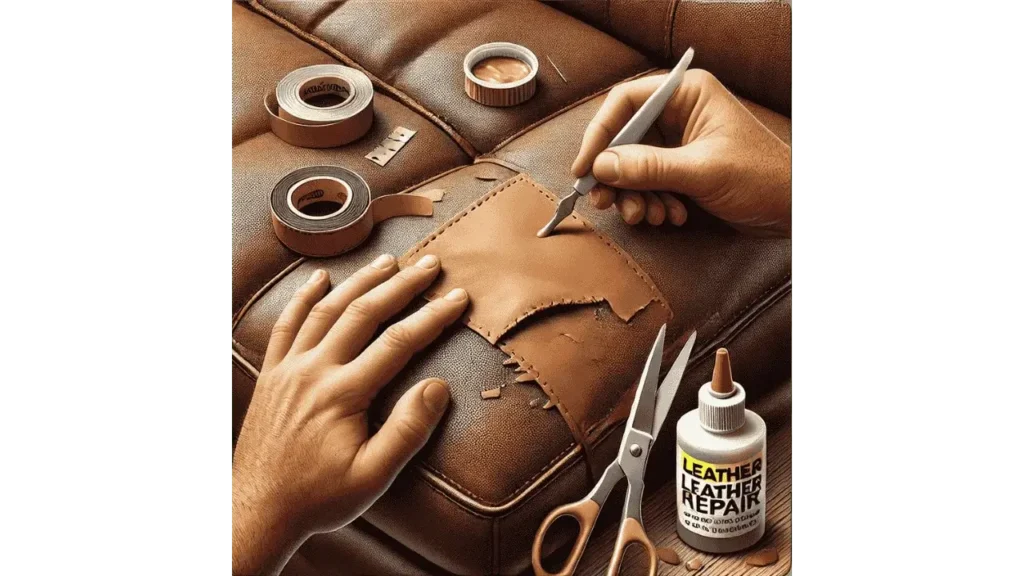Dealing with a damaged leather couch can be frustrating, especially when cracks, scratches, or tears start to show. The good news is that with the right approach and materials, you can restore its appearance without the need for costly replacements. Whether it’s a small scratch or a noticeable tear, taking the time to patch your leather couch can help extend its lifespan and keep it looking great.

Assessing the Damage
Before starting the patching process, it’s important to carefully assess the damage. Determine whether the issue is a minor scratch, a small tear, or a larger hole. Understanding the extent of the damage will help in selecting the right repair method. If the damage is extensive, seeking professional help may be a better option.
Gathering the Necessary Materials
Having the right materials is key to achieving a smooth and durable repair. Essential items include a leather repair kit, a mild leather cleaner, fine-grit sandpaper, a sponge or soft cloth, and a leather conditioner. These materials help in ensuring the patch blends seamlessly with the rest of the couch.
Step-by-Step Guide to Patching a Leather Couch
1. Clean the Damaged Area
Start by cleaning the damaged area thoroughly. Use a mild leather cleaner to remove any dirt, oils, or debris that might interfere with adhesion. A clean surface ensures better bonding of the patch and a more professional finish.
2. Trim Loose Edges
If the damage includes frayed edges or loose pieces, carefully trim them with scissors. This helps in creating a smooth base for applying the patch or filler, preventing further tearing and ensuring a neat appearance.
3. Apply a Leather Patch or Filler
For small scratches or cracks, using a leather filler can provide a smooth surface. For larger tears, a leather patch can be placed underneath or on top of the damaged area. Follow the instructions on the repair kit to apply the patch securely.
Learn More: Getting Ink Off Leather Couch
4. Smooth and Blend the Patch
Once the patch or filler is applied, smooth it out using a sponge or your fingers. Blending the edges carefully ensures the repair integrates seamlessly with the rest of the couch. Allow it to dry as recommended.
5. Let It Dry and Condition the Leather
After the repair is completely dry, applying a leather conditioner helps restore the couch’s flexibility and natural appearance. Conditioning also prevents future cracks and keeps the leather soft.
How to Maintain a Patched Leather Couch?
Regular maintenance helps prolong the life of the repaired area. Cleaning spills promptly, conditioning the leather periodically, and avoiding excessive exposure to sunlight can prevent further damage and keep the couch in good shape.
Final Takeaways
Repairing a leather couch doesn’t have to be complicated. By following the right steps and using quality materials, it’s possible to fix minor damage and bring your couch back to life. Taking care of the leather regularly will not only maintain its appearance but also prevent future wear and tear. With a little effort, your couch can continue to serve as a comfortable and stylish part of your home for a long time.
- How to Wear an Oversized Leather Jacket? Style Tips for a Casual Look - August 6, 2025
- How to Fold a Leather Jacket? - August 5, 2025
- How Should a Leather Jacket Fit a Woman? - August 1, 2025



